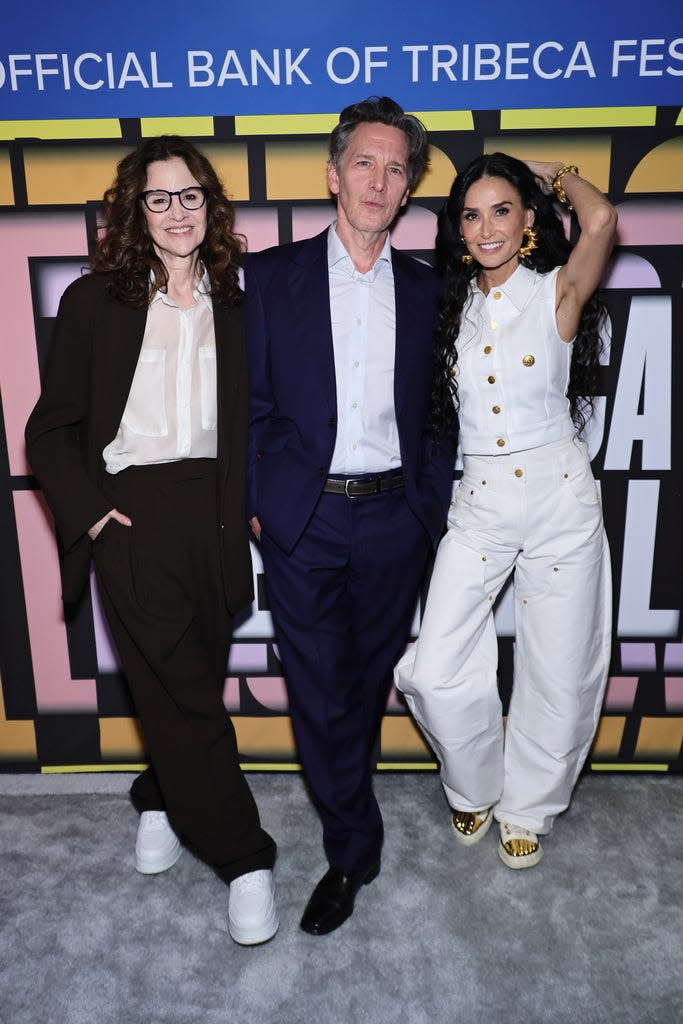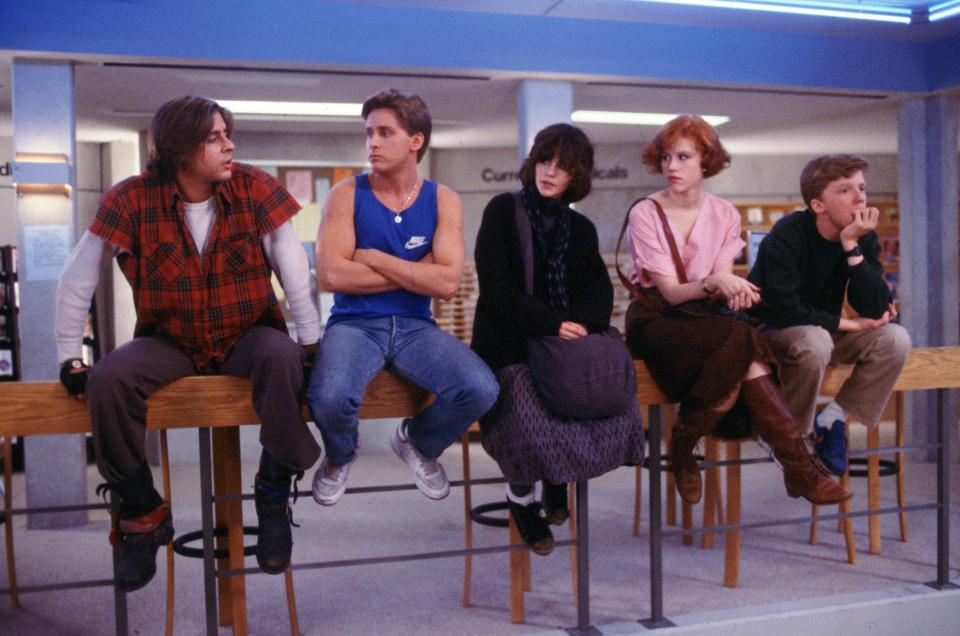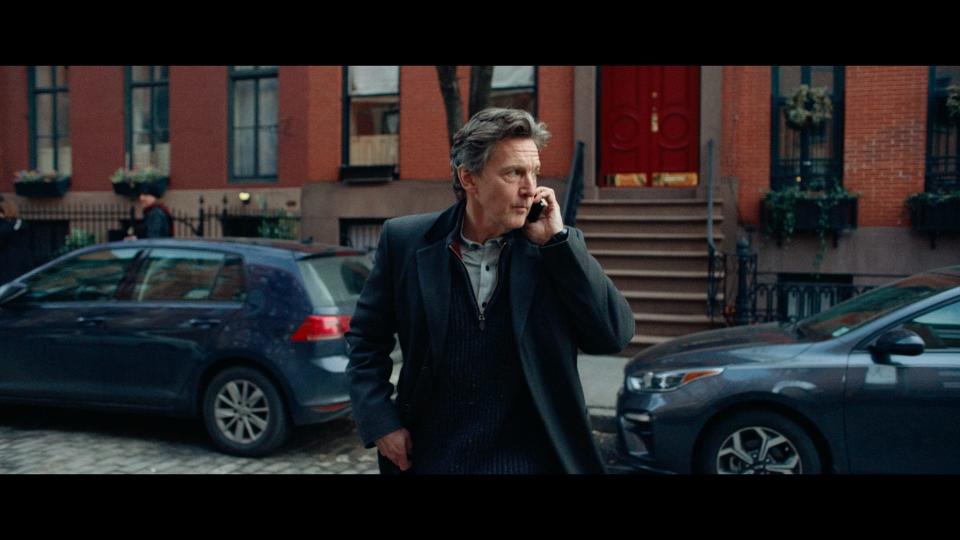The Brat Pack but no Breakfast Club? Why Andrew McCarthy documentary is missing members
Andrew McCarthy has come to accept, even love, the Brat Pack. But it's been a journey.
For years, the "Pretty In Pink" and "St. Elmo's Fire" actor bristled at the mention of the unshakable description thrust upon a generation of young rising stars in the 1980s. Yet in his new Hulu documentary "Brats" (streaming Thursday), McCarthy embarks on a journey tracking down other forever-branded members ? stars like Demi Moore, Ally Sheedy, Rob Lowe and Emilio Estevez ? to talk Brat Pack.
"There's only a handful of us that this all happened to, the only ones who know what it felt like. But we never talked about it," director McCarthy, 61, tells USA TODAY of his "Brats" discussions with co-stars he hadn't spoken with in decades. "We have something really profound that happened in our lives, and they were willing to talk to me about it on camera."
Join our Watch Party! Sign up to receive USA TODAY's movie and TV recommendations right in your inbox
How did Andrew McCarthy get the Brat Pack to talk in 'Brats'?

"Brats" begins with McCarthy reaching out to the Brat Pack by pulling out old contacts, even wrangling Judd Nelson's phone number from a manager. McCarthy makes the first filmed call to Estevez, who was the subject of a snarky 1985 New York Magazine cover story that coined the instantly permanent term Brat Pack.
"I felt that I had lost the narrative of my career overnight," McCarthy says of the infamous article. The ensemble movie "St. Elmo's Fire" (starring Estevez, Moore, Sheedy, Lowe and Nelson), released a few weeks later, became the white-hot center of the Brat Pack sensation.
Contrary to the public imagination, the Brat Pack members didn't hang out, especially after the article came out. And they didn't keep in touch. McCarthy's cold calls kicking off "Brats" are raw. Many go to voicemail.
"When I'm calling somebody, it's the first time in more than 30 years. But it's like, 'Let's call Emilio,' " McCarthy says. "I wanted the viewers to be on this journey with me. I seem wary and trepidatious at first."
When McCarthy meets with Estevez, 62, at his Malibu home in "Brats," it's their first face-to-face encounter since the premiere of "St. Elmo's Fire." The conversation hits on Estevez's past telling comment that "Brat Pack will be on my tombstone" (he still believes it and accepts it). The "Young Guns" actor also reveals that he avoided starring in movies with McCarthy and the others because they were "kryptonite to each other."
"Emilio was particularly poignant," McCarthy says of the discussion before the two hugged it out.
In successive conversations with Lowe, Sheedy and Moore (whom he calls "the Obi-Wan Kenobi of my film"), McCarthy explores the confusing Brat Pack past and the long, often painful road to appreciating their shared history.
"Everybody started at the same point: Everybody hated it when it happened. And then over time, everyone's evolution toward it has been different," McCarthy says. "But we never talked about it because the minute it happened, those relationships scattered and those ensemble movies stopped. No one wanted to be in a movie together. So the very naming of the Brat Pack ended the Brat Pack, in a certain way."

Are Molly Ringwald and Judd Nelson in 'Brats'?
John Hughes' 1985 film "The Breakfast Club" is a cornerstone of the Brat Pack library, with a cast that includes Estevez, Sheedy, Nelson and Molly Ringwald. The latter two stars did not ultimately sit down for "Brats" interviews.
"We asked Judd, we asked Molly," McCarthy says. "It didn't work out."
There's a recurring "Brats" theme of McCarthy wrangling Nelson ? talking to him on the phone, leaving messages, and traveling to Los Angeles to find that Nelson is out of town.
"Then eventually, finally, (Nelson) said, 'You know what? I don't feel like doing it.' Which is fine," says McCarthy, who points out that Nelson and Ringwald appear in "Brats" through "really insightful" archival interviews.

The vintage footage of the actors being probed about the derivative term during interviews are painful to watch.
"For like the first two months, the Brat Pack is brought up all the time. And we're reacting to it, often twitching and cringing," McCarthy says. "Clearly, everybody's publicist said 'No Brat Pack questions.' So then everybody's asking about it without using the two words. Which is really awkward because, clearly, that was forbidden. But that didn't work either."
Through the "Brats" interviews, which include pop-culture social scientist Malcolm Gladwell, McCarthy furthers his appreciation of why fans looked to these stars during the youth-movie explosion the Brat Pack ignited.
"The public realized very quickly, 'This is awesome. These guys represent us,' " McCarthy says. "So they understood something we didn't at the beginning."

People are still talking about the Brat Pack 39 years after the article, sharing memories with McCarthy on the streets of New York City, where he resides. He accepts these talks with a grateful state of mind.
"This film is all of us being like, 'What the heck was all that?' to 'Wow, that was a beautiful thing.' We are the avatars of a generation's youth. I wouldn't trade this for the world. But if you told me that 30 years ago, I would have said that you were crazy."
Like Estevez, McCarthy is sure the Brat Pack will follow him beyond this life.
"If there is an obituary, that will be in the first sentence. Fair play. The beauty of it is that now I'm cool with that. It's like, I'll take that."
Looking for reliable streaming options to catch "Brats" on Hulu? Check out USA TODAY Home Internet for broadband service plans in your area.
This article originally appeared on USA TODAY: How Andrew McCarthy wrangled the Brat Pack for 'Brats' documentary
